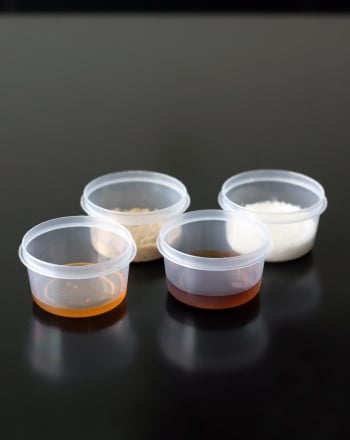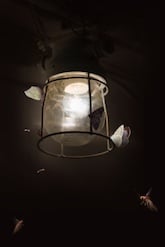Science project
Do Plants Grow Better in Sunlight or Artificial Light?
Grade Level: 5th - 6th; Type: Physical Science/ Botany
Objective:
In this experiment, we will discover if an artificial light source will yield the same plant health and growth rates as light from the sun.
Research Questions:
- How does the incadescent light bulb work?
- Why does it produce heat?
Plants grow through a process called photosynthesis. This requires sunlight to take place. The chlorophyll located in the chloroplast of the plant cells grabs sunlight and starts the reactions (such as sugar) that are needed to make the plant grow. Water is also needed in the growth equation, because like humans and animals, plants need moisture to quench their thirst.
While it is somewhat debatable as to who invented the light bulb, it has become common knowledge that we associate the light bulb with Thomas Edison. He created an incadescent light bulb that outsmarted his fellow inventors because it was fully integrated with an effective incadescent material, a higher vacuum than others, and a high resistance which made powering up the lightbulb with electricity economical.
Materials:
- An incadescent light bulb
- Light timer (if you don't have this....there is an alternative: keep reading)
- Sunlight
- 2 beans (i.e. lima beans, lentils, pinto beans)
- 2 pots with soil
- Water (same amount for each pot, we are only changing the light source)
- Ruler
- Pen and paper
Experimental Procedure:
- First we will pot the beans. Use your finger and make a small hole about 2 inches deep into the soil of each of the 2 pots. Put a bean into each hole and cover it up with soil. Give it a pat.
- Label each pot with the type of light it will receive- sunlight or light bulb light.
- Take one pot and put it under a light bulb and turn it on. Set it on timer so that it can mimic the time the sun rises and sets daily. If you don't have a timer, you'll have to wake up in the morning and turn the light on and close it at night when the sun sets.
- Take the other pot and put it in a place with lots of bright sunlight. Perhaps a windowsill.
- Give the plants their first taste of water. Just give them a little water. Just a sprinkle, spritz, or “rain” would do. Do not overwater them with too much! You will water them the same amount at least daily or when they are dry. You can test if they are getting too much water by just sticking your finger to the side of the bean and into the soil. If your finger comes out muddy, they have too much water and you shouldn't water them. The soil should be a nice dampness or dry.
- The beans should germinate in 2-5 days, depending on location and conditions. After this, you should start monitoring their daily growth for 2 weeks and measure how tall the sprout is for each sample. Which one is growing at a faster rate? Is there any difference? Any other things you see like a difference in plant healthiness?
- After 2 weeks, analyze your results.
Terms/Concepts: Incadescent light bulb; filament; plant growth; heat; sunlight; photosynthesis
References:
Hyne, Norman J. (1991). Dictionary of petroleum exploration, drilling & production. pg. 190: PennWell Books. pp. 625. ISBN 0878143521.
Education.com provides the Science Fair Project Ideas for informational purposes only. Education.com does not make any guarantee or representation regarding the Science Fair Project Ideas and is not responsible or liable for any loss or damage, directly or indirectly, caused by your use of such information. By accessing the Science Fair Project Ideas, you waive and renounce any claims against Education.com that arise thereof. In addition, your access to Education.com's website and Science Fair Project Ideas is covered by Education.com's Privacy Policy and site Terms of Use, which include limitations on Education.com's liability.
Warning is hereby given that not all Project Ideas are appropriate for all individuals or in all circumstances. Implementation of any Science Project Idea should be undertaken only in appropriate settings and with appropriate parental or other supervision. Reading and following the safety precautions of all materials used in a project is the sole responsibility of each individual. For further information, consult your state's handbook of Science Safety.













